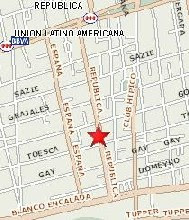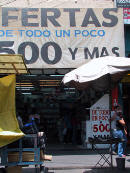
MIThe Santa Lucia hill.
Is located downtown of Santiago, at Miraflores street and Santa Lucia street.
Was in this hill where Pedro de Valdivia founded Santiago del nuevo extremo in 1541.
The original name of this hill was Huelen, that mens pain. And it was called this way by the native of the zone.
Initially used to be a dump but was Benjamin Vicuña Mackena who saw in this hill a potential green lung and recreacinal zone for the city.
It build whit the help of the prisioners at that time paths , gardens, view ing-points and a chapel in the top.
ing-points and a chapel in the top.
Also it possesses the Hidalgo Fort, place that nowadays works as center of events.
From the top it is possible to observe the city, see the San Cristobal hill, the Liberator Bernando O" higgins Avenue and the White hill.
In the hill it is possible to find the terrace and fountain of Neptune, also Benjamin Vicuña Mackena's tomb, the Japanese garden, among many panoramic places for the rest.
Nowadays is very visited by tourists and is one of the typical postcards of this city.
His entry is liberated and possesses elevator for disabled and sanitary services.



















